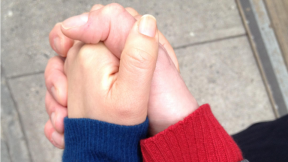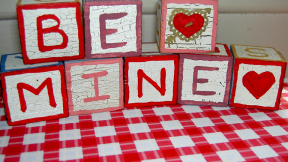
“…surely Allah does not change the condition of a people until they change their own condition” (Qur’an 13:11)
“Man can alter his life by altering his thinking”. (William James)
I will start with some apparently disjoint, but in my mind related points and then try to string them together.
Point 1: “Zombie modes”, they call them, not in reference to the authors Frances Crick and Christof Koch, but in reference to the brain’s stereotypical, transient, and unconscious response to the world around us. In a paper entitled “A framework for consciousness”[1] Frances Crick who received the Nobel prize for his contribution to the discovery of DNA, and Christof Koch a respected neurophysiologist, have mused about the cellular activities that ultimately culminate in what we call the human mind.
Point 2: Valentine’s day will mark the highest attendance at restaurants of any day of the year: just one example of the brain’s stereotypical, transient and unconscious response to the world around us. Evolutionist might argue that this “zombie mode” is programmed in the genes, since ultimately how could such a romantic day, a plethora of vegetative activities (eating and drinking) pass without another vegetative activity, that of propagation of ones DNA. Remember according to evolutionists we live to propagate our genes. The romantic might argue that it is truly a special day to show another person how strongly one feels about the other. Practically that could only mean some sort of consumer activity deemed by society as being expressive of ones “love” for the other. It must be performed on an arbitrary day called Valentine’s Day, where that same activity might not have the same meaning on any other day of the year. The key though is to consume.
Point 3: A mass advertising campaign initiated by ultimately what was to be a conglomerate of diamond miners in South Africa called De Beers, undertook an advertising campaign to alter the marriage ritual in Japan, a tradition that had been in place for more than a millennium. In a society with no precedence of romance, courtship, and prenuptial love, in just thirteen years almost sixty percent of Japanese women were wearing a diamond wedding ring. A fifteen hundred year old tradition in which two people were wed thorough a simple tradition of drinking form the same wooden bowl, was transformed, though advertising. Indeed the slogan “A diamond is forever” the clever tag line coined for the De Beers’ advertising campaign, captured the ever lasting concept of “love” in a carbon matrix, the sentimentality of the ring making re-entry of a “used” diamond back into the market quite unlikely: a very expensive one way trip for a meaningless stone.
Point 4: Cognitive neuroscientists use the term “illusion of truth” to describe how people erroneously decide on what is true or false when presented information. It appears that the more times we see, hear, or are told something the more likely we are to believe it is true. Take for example one experiment in which subjects were told that everything a female says is true and everything a male says is false. The participants were then shown sentences like “Mary says the sky is blue” and “John says that lions are the loudest mammals”. If in a delayed fashion the subjects were shown the card “Lions are the loudest mammals”, the participants more frequently than not thought this statement was true, even though at the time of presentation they knew this statement was incorrect. The explanation is that the brain tends to take as truth what it experiences most often, often forgetting the context of where the information was obtained. Participants often “felt” that the statements were correct since they had heard something like it before, the statements seemed familiar, and familiar to our brain means truth. “A propagandists dream” the author stated at the beginning of the section on the illusion of truth, in a standard textbook on neuropsychology.[2]
The common thread …
As a Muslim I believe that the Qur’an is the word of Allah. As a Muslim, I believe in the Word of Allah, and in the Qur’an I am told that “There is no compulsion in religion…” (Quran 2:256). Not even Allah expects us to follow blindly the religion he has prescribed for us, not to be “driven or urged by overwhelming pressure” into belief. Verse after verse we are told to reflect, to critically analyze that which is presented to us so that we do things out of understanding, and not out of rote like a zombie. It is generally accepted that with respect to the Qur’an “…understanding and contemplation with little reading is better than much recitation without thinking or contemplation”[3]. The first word that was uttered to Muhammad peace be upon him was iqra (read), “Read in the name of your Lord…” (Qur’an, 96:1) followed shortly by the concept of transcribing information, “…who taught with the pen, taught man what he knew not” (Qur’an, 96:4-5).
Information, the acquisition of it through reading and understanding, and the dissemination of it through transcription were the first concepts to be expounded to Muhammad (PBUH). How much do we seek to know about our environments? How zombie like are we, that we accept the things around us without question? Sir Victor Horsley, the father of neurosurgery, was a prohibitionist (he also fought for women’s right and political reforms) who wrote a book entitled “Alcohol and the Human Body”[4], arguing that alcohol is a poison and should not be consumed. Alcohol is a social habit he argued, and habits that involve craving are much more easily acquired than habits that require self control: “it is easy to crave and hard to control”. I would argue that when it comes to knowing our environment we are pretty passive, absorbing anything that appeals to our cravings, after all it takes so much less energy than critical analysis. Let’s use diamonds as just one example, it’s Valentine’s after all. So why do you want a diamond ring, or why do you want to give somebody you are going to marry a diamond ring? You don’t know do you? Think about it! Programmed in your genes! Hardly. More like programmed in your brain. I’ll give you some hints: it’s just what everybody does, its natural, it’s part of getting married, it is symbolic of love, it symbolizes commitment and eternity, etc, etc, etc. But who programmed you to think this? Furthermore, if you didn’t know somebody programmed you, how many other unwanted programs do you have running around in your brain. It’s like having all this spyware and adware loaded onto your computer without knowing it, but it’s your brain!
Okay, we are hardwired, to some extent. What I mean by hardwired, is that we have the existing circuitry to carry out some things right when we are born. But the greatest attribute about the brain is that the hardwiring is designed to learn, change, and adapt. Our intellect then is as much a product of the genes that coded for the our brain’s wiring[5] as the environment that shapes the connections we will use throughout our lives. The property of the brain that allows it to change is called plasticity. Diamond rings as expressions of eternal love represent brain plasticity, not hardwiring. How about some hard data regarding this point. Cats who are brought up in a environment without light remain blind for their entire lives. Cats that are brought up in an environment with only horizontal lines will only see horizontal lines not vertical lines (see ref. [6] for review of basic neurophysiology and experiments on cats). It is clear that brain cells and connections that do not get used are lost, and those that are reinforced are preserved[6, 7]: use it or loose it. So then really if you actually believe that a diamond ring has all this sentimental value, I would ask you: who taught you this? Can you explain why a diamond ring has sentimental value? Cultural norms, socialization, and advertising are the usual mechanism by which things become engrained into our psyche. So then you got exposed to horizontal lines (diamonds are sentimental) but did you get exposed to the vertical lines (no sentimental value can be attached to inanimate objects)? Thus as an adult all you see, all you can see, are horizontal lines (diamonds have sentimental value). Hence, thinking outside the box is not possible, because you can’t see outside the box.
The brain models and molds itself to the environment, just as we use our brains to change the environment around us. Thus a duty born by us, by our educators, mentors, and parents is to provide as rich an environment as possible so that brain connections are not lost, but diversified and strengthened. In analogy to the cat experiments, a parent that does not provide a rich environment, that is stimulating and challenging for their offspring, will place their children at a disadvantage, be it from a religious or socioeconomic perspective. A child brought up in an environment that is unquestioning will be unquestioning in adulthood, a zombie.
Read, understand, and analyze your environment and your behaviors. Ask why you are just like all those that will stream to the local restaurant on Valentine’s day, or feel unsatisfied if you don’t get a diamond ring. Ask why you go to Tim Horton’s as opposed to the Second Cup, is there a difference? Is there a difference in the coffee, or is there also a difference as to what the profits are used for. What about Coke vs. Pepsi, or Wal Mart vs. Sears. Ask why Islam views the union of two people not only in a spiritual and romantic way, “And among His signs is this, that He created for you mates from among yourselves, that you may dwell in peace and tranquility with them and he has put between you affection and compassion; most surely there are signs in this for a people who reflect.” (Qur’an 30:21), but also in a pragmatic way in that marriage is a contractual agreement (Qur’an 2:282). Ask why you have chosen to be socialized according to the Hollywood[8] version of romance rather than the Islamic version of marriage.
Ask why Allah has asked you over and over again to reflect: reflect on your environment, reflect on your behaviors. Don’t accept things you hear over and over again as truth, since this is the fallacy of the illusion created by the media in all it’s forms: the illusion of truth. It is necessary to query the state of our environment from social, political, and religious perspectives, lest we become complete zombies in all our daily encounters, and believe all that is fed to us. Take nothing for granted. Don’t let yourself become blind to vertical lines.
An often stated adage in the medical specialty of radiology (radiologists deal with pictures essentially), “the brain sees what it knows”. The less you know the less you see, and in the limit as the Qur’an states you become “Deaf, dumb and blind”, a zombie to the 3rd degree, a zombie cubed! Just like the cats that were raised in and environment with no light, and thus were blind for life, we too can become blind to life and for life! There is however a critical period for this to occur and the changes that occurred during the time the cats were in the darkened environment could be reversed with exposure to light and scenery.[6] So don’t fret there is hope for our brains.
Ultimately the choice is ours. We are ultimately accountable for our actions (Qur’an, 2:286). We as individuals should ask ourselves what are we comfortable with, and do we understand the environment around us. If being a zombie is appealing to you then great. If not, then read, understand and reflect. These acts in of themselves will change your brain, and hence will change your environment. Knowledge begets questions, and questions beget solutions. Relax, read, reflect, then regroup. Four more R’s to add to the three R’s of Reading, wRiting and aRithmetic. And don’t worry, any effort counts, even the tiniest inciest winciest of them[9].
Thus to end from where I began: don’t be a zombie - change your thinking, change your life, change our condition.
Dr. Taufik A. Valiante is a neurosurgeon at the Toronto Western Hospital. He is Associate Professor of Neurosurgery at the Institute of Biomaterials and Biomedical Engineering. He is the Director of the Surgical Epilepsy Program, and a neuroscientist studying brain function. You can follow him on Twitter (@DrValiante) for neuroscience related information.
1. Crick, F. and C. Koch, A framework for conciousness. Nature Neurosci, 2003. 6(2): p. 119-126.
2. Reisberg, D., Cognition: Exploring the science of the mind. Second ed. 2001, New York: W W Norton & Company Inc.
3. al'Alwani, T.J., ed. The Qur'an: The primary source of knowledge. The Qur'an and the Sunnah: The time-space factor, ed. A.S. al Shaikh-Ali and R. Messaoudi. Vol. 3. 1991, International Graphics: London. 5-26.
4. Horsley, V. and M.D. Sturge, Alcohol and the human body. Fourth ed. 1907, London: Macmillan.
5. Turner, G., Intelligence and the X chromosome. Lancet, 1996. 347: p. 1814-15.
6. Kuffler, S.W., J.G. Nicholls, and A.R. Martin, From neuron to brain. 1984, Sunderland, Massachusetts: Sinaur Associates Inc.
7. Johnston, M.V., Clinical disorders of brain plasticity. Brain Dev, 2004. 26(2): p. 73-80.
8. Gabler, N., An Empire Of Their Own: How The Jews Invented Hollywood. 1988, New York: Crown Publishers, Inc.
9. Valiante, T.A., Butterflies in Islam: why a little is alot, in The Muslim Voice. January 2004. p. 4-5.
© Sound Vision Foundation
Note: Please share this article using our share buttons below. However, for permission to distribute electronically or in print, please send an email to Copyrights@SoundVision.com. Thank you.






Add new comment